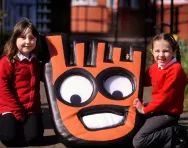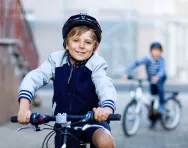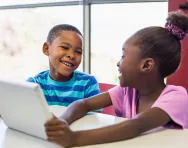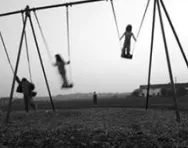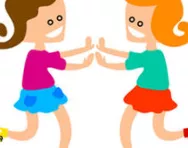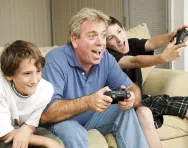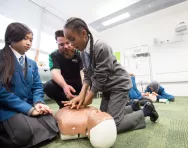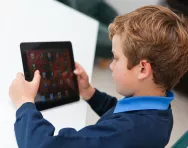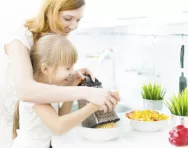Important update from TheSchoolRun
For the past 13 years, TheSchoolRun has been run by a small team of mums working from home, dedicated to providing quality educational resources to primary school parents. Unfortunately, rising supplier costs and falling revenue have made it impossible for us to continue operating, and we’ve had to make the difficult decision to close. The good news: We’ve arranged for another educational provider to take over many of our resources. These will be hosted on a new portal, where the content will be updated and expanded to support your child’s learning.
What this means for subscribers:
- Your subscription is still active, and for now, you can keep using the website as normal — just log in with your usual details to access all our articles and resources*.
- In a few months, all resources will move to the new portal. You’ll continue to have access there until your subscription ends. We’ll send you full details nearer the time.
- As a thank you for your support, we’ll also be sending you 16 primary school eBooks (worth £108.84) to download and keep.
A few changes to be aware of:
- The Learning Journey weekly email has ended, but your child’s plan will still be updated on your dashboard each Monday. Just log in to see the recommended worksheets.
- The 11+ weekly emails have now ended. We sent you all the remaining emails in the series at the end of March — please check your inbox (and spam folder) if you haven’t seen them. You can also follow the full programme here: 11+ Learning Journey.
If you have any questions, please contact us at [email protected]. Thank you for being part of our journey it’s been a privilege to support your family’s learning.
*If you need to reset your password, it will still work as usual. Please check your spam folder if the reset email doesn’t appear in your inbox.
The safety rules every child must know
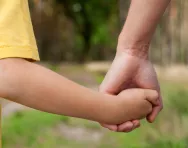
In the early years of your child’s life, most of the responsibility for keeping them safe belongs to you.
But as they get older and more independent, it’s important that they learn some key safety rules, whether they’re at home, walking to school or around the pool on holiday.

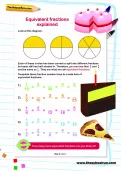
Start a unique learning programme!
- Weekly programme for each school year
- Worksheets sent direct to your inbox
- Keeps your child's learning on track
Knowing how to speak to your child about safety can be tricky. It’s not always easy to the importance of keeping themselves safe without scaring them.
We asked the experts at the Child Accident Prevention Trust (CAPT) for their advice on teaching your child the basic rules they need to know to manage risks and stay safe.
Water safety for children
Many children love being in water, whether it’s a swimming pool, the sea, or just a paddling pool in the garden, but drowning is one of the biggest causes of death in young children.
‘As children grow, they become more capable in water, but no matter how good a swimmer your child is, they still need an adult keeping an eye on them, as they can get into difficulty quickly and quietly,’ says Katrina Phillips, CEO of CAPT.
What to tell your child:
- Only swim if you’re in a safe place, like a public swimming pool with a lifeguard.
- At the beach, look for the red and yellow flags and swim between them. This is the area patrolled by lifeguards.
- Even if the sea looks lovely and flat, the wind can sweep you out to sea scarily quickly if you’re on an inflatable, so it’s best to only use these in a swimming pool. Look out for an orange windsock: this means the wind is especially dangerous.
- Swimming in canals, lakes or rivers can be dangerous because of strong currents that you can’t see, freezing cold water that’s deeper than you expected, and objects lurking in the water.
- If you fall in, float or swim on your back.
- If someone else is in difficulty in the water, tell someone nearby, like a lifeguard or another adult. Don’t jump in yourself! You can throw them a life ring or another floating object, but it’s important not to put yourself in danger.
Fire safety for kids
Having working smoke alarms is one of the best ways to protect your family from fire at home, but it’s still vital that your child knows some basic fire safety rules.
This will help them know what to do if they discover a fire, or if their clothes catch fire, as happened to Claudia Winkleman’s daughter, whose Halloween costume caught light on a candle while trick or treating.
What to tell your child:
- Don’t be tempted to play with matches, lighters or candles, as fires can get out of control really quickly.
- If you see smoke or flames, tell a grown-up straight away. It’s really important that you don’t try to put the fire out yourself.
- If the smoke alarm goes off at night, shout to wake everyone up.
- If there’s a fire, get outside as quickly as possible using your normal way out. Don’t hide under a bed or in a wardrobe, and don’t stop for toys or pets.
- If you’re trapped inside and there is smoke, crawl along the floor where the air is cleanest. Go to a room with a window that opens. Put blankets, towels or clothes at the bottom of the door to stop smoke getting in.
- If there’s a phone, call 999 and say that there’s a fire. Give as much information about your address as you can. If there isn’t a phone, open the window and shout for help. This will help firefighters see where you are, so they can come and rescue you.
- Shut your bedroom door at night: if there’s a fire, this will help to stop it spreading to your room so quickly.
- If your clothes catch fire, don’t panic – STOP, DROP, and ROLL. STOP what you are doing. DROP to the ground and cover your face with your hands. ROLL over and over to put out the flames.
Road safety: how to talk to children
At some stage, your child is likely to outgrow holding your hand and develop more independence around roads, including walking or cycling to school alone.
‘Children have difficulty judging speed and distance until they are at least eight, and older children are still at risk: the number of children injured as pedestrians peaks at 12, when many start travelling to and from school on their own,’ says Katrina.
‘Getting your child into safe habits early and setting a good example yourself can really help later when they’re more independent.' Keep road safety advice simple and make it fun.
What to tell your child:
- Paths and pavements are for people – roads are for traffic. The safest places to cross are underpasses, footbridges, traffic light crossings, zebra crossings and with a lollipop person.
- (For younger children) Hold a grown-up’s hand near roads and don’t let go. Stop straight away if you’re told to.
- When you need to cross a road, follow the Green Cross Code together: think where it’s safe to cross, stop, look and listen, wait for any traffic to pass and then check again – arrive alive!
- When you get out of the car, get out on the pavement side if you can.
- Always wear your seatbelt in the car, and if you’re travelling by bus, minibus or coach, if there is one.
- Always wear a helmet if you’re on your bike or scooter.
- If you’re out in the winter or in the dark, wear bright or reflective clothing so you can be seen.
Read our advice about cycling safety and Bikeability.
Home safety for children
‘For under-fives, most serious accidents happen in the home, but as your child grows, the serious risks reduce,’ says Katrina.
‘They are more able to help with day-to-day jobs and can learn to take more responsibility for themselves, but there are safe behaviours that they need to learn alongside their growing independence.’
What to tell your child:
- Water and electricity don’t mix: never to take electrical appliances into the bathroom.
- If you’re helping in the kitchen, carry scissors and knives pointing downwards, use oven gloves and don’t leave anything cooking unattended.
- Keep your toys out of reach of younger brothers or sisters – especially if they have small or dangerous parts (parents: bear in mind that children might forget, so always keep an eye on younger children yourself).
- Sit down when you’re eating so you chew and swallow properly, and be careful when you’re eating chewing gum, ice cubes and sweets, as you could easily choke on them.
- Never put small items in your mouth, especially button batteries and magnets: they can be really dangerous if you swallow them accidentally.
- Carbon monoxide is a dangerous gas that every age group should be aware of. The Safety Seymour website offers storytelling, cartoons and classroom-style activities to alert families to the danger of deadly carbon monoxide in the home.
How to talk to kids about stranger danger
Many of us grew up with the threat of stranger danger and had nightmares about shadowy figures in black trench coats. But children need to know that any person they don’t know could be dangerous, even if they’re female or ‘look nice’.
They also need to know what to do if they get lost in public.
What to tell your child:
- Don’t take sweets or presents from a stranger (unless you’re with a trusted grown-up and they say it’s okay).
- Never get into a car with a stranger or go off with them.
- Stay with your friends if you go out to the park or shop or for a walk without a grown-up.
- It’s okay to break the rules if you think you’re in danger: for example, you could shout, scream, kick or run away.
- Some people are ‘safe strangers’, like police, paramedics and shop assistants. If you need help you can ask one of these people: you can tell who they are because they’re wearing a uniform.
- You can also go into ‘safe buildings’ if you’re feeling anxious, like a doctor’s surgery, library, supermarket or post office.
- If you get lost, stay where you are rather than going to find your grown-up: this will make it easier for them to retrace their steps and find you.
- Practise saying your name, address and phone number so you can tell a safe adult if you get lost.
For advice staying safe with strangers online, read our advice on online safety and gaming safety.
Animals and children: safety tips
Animals and children can have a special bond, but any animal – even one they know well – could turn on them if they feel threatened.
It’s important that your child knows how to treat animals with respect, whether they’re a family pet or one they’ve never met before.
What to tell your child:
- Play gently with your pet, rather than pulling ears or tails, climbing, or lying on them, or taking a toy when they’re playing with it. You could throw a toy for them to play with, or teach them a trick like rolling over or shaking paws.
- Don’t disturb an animal when they're eating, sleeping, having a treat or playing with a special toy or blanket.
- Never go up to a dog you don’t know, for example in the park, even if it looks friendly.
- If you’ve been feeding an animal, helping to pick up their poop or clean their cage, or have been at a farm, zoo or petting zoo, wash your hands well with soap and water.
Dogs and children: an infographic created by the RSPCA
To find out more about avoiding risks, follow the Child Accident Prevention Trust on Facebook or Twitter.

